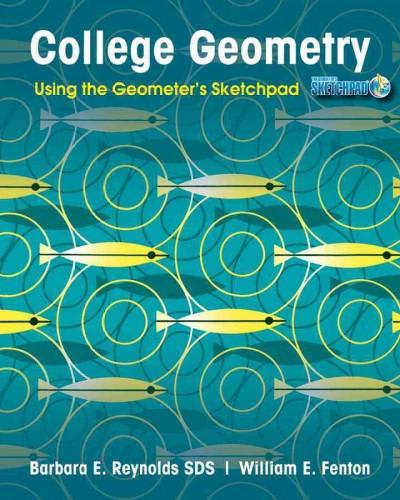Question
Solve all Kindly. The lifetime of a bulb is demonstrated as a Poisson variable. You have two bulbs types An and B with expected lifetime


Solve all Kindly.
The lifetime of a bulb is demonstrated as a Poisson variable. You have two bulbs types
An and B with expected lifetime 0.25 years and 0.5 years, individually. At the point when a
bulb's life closes, it quits working. You start with new bulb of A toward the beginning of
the year. At the point when it quits working, you supplant it with a bulb of type B. At the point when it
breaks, you supplant with a sort A bulb, at that point a sort B bulb, etc.
1. Track down the normal absolute light time (in years), given you do precisely 3
bulb substitutions.
2. Your substitutions are currently probabilistic. On the off chance that your present bulb breaks, you
supplant it with a bulb of A with likelihood pp, and with type B with
likelihood (1 - pp). Track down the normal complete brightening time (in years),
given you do precisely nn bulb substitutions, and start with bulb of A.
Answer for section 2 exists in shut structure regarding n and p.
Thermal energy stations have repetitive segments in significant frameworks to diminish the opportunity of cataclysmic disappointment. Expect that a plant has two checks to quantify the degree of coolant in the reactor center and that each measure has likelihood 0.01 of fizzling. Expect that one likely reason for check disappointment is that the electric links driving from the center to the control room where the measures are found may wreck in a fire. Somebody wishes to appraise the likelihood that the two checks fizzle, and makes the accompanying estimation:
P(both checks fall flat) = P(first measure comes up short) P(second measure fizzles)
= (0.01)(0.01)
= 0.0001
1.What supposition that is being made in this estimation?
2.Explain why this supposition that is most likely not advocated in the current case.
3.Is the likelihood of 0.0001 prone to be excessively high or excessively low? Clarify.
Flying over the western states with precipitous territory in a little airplane is 40% more dangerous than flying over comparable distances in compliment parts of the country, as indicated by a General Accounting Office study finished because of a legislative solicitation. The mishap rate for little airplane in the 11 rugged western states is 2.0 mishaps per 100,000 flight tasks.
(a) Let r = number of mishaps for a given number of activities. Clarify why the Poisson circulation would be a decent decision for the likelihood dispersion of r.
Recurrence of mishaps is an uncommon event. It is sensible to expect the occasions are reliant.
Recurrence of mishaps is a typical event. It is sensible to expect the occasions are reliant.
Recurrence of mishaps is a typical event. It is sensible to accept the occasions are free.
Recurrence of mishaps is an uncommon event. It is sensible to expect the occasions are free.
(b) Find the likelihood of no mishaps in 100,000 flight activities. (Utilize 4 decimal spots.)
(c) Find the likelihood of in any event 7 mishaps in 200,000 flight tasks. (Utilize 4 decimal spots.)
Consider an adjusted variant of the table game RISK wherein player An is assaulting player B. Toward the start of each turn, player A moves N 4-sided dice where N+1 is the quantity of armed forces that player A has (So if A has 3 armed forces, A beginnings by moving 2 4-sided dice). Player B consistently rolls a solitary 6-sided kick the bucket. On the off chance that the greatest move among the dice that A rolls is greater than player B's move, at that point player B loses a military. Assuming all of player A's rolls are not as much as player B's move, player A loses a military. In the event that it is a tie, neither one of the players loses a military. The rolls are rehashed until either B has no militaries (A has a caught the area) or A has just a single armed force (the assault has been repulsed).
1.If A has two armed forces and B has one armed force discover the likelihood for every occasion: A loses a military, B loses a military and neither lose a military
2.If A has three armed forces and B has one armed force discover the discover the likelihood for every occasion: A loses a military, B loses a military and neither lose a military
3.If A has three militaries and B has one armed force discover the likelihood for every occasion: A loses a military, B loses a military and neither lose a military
4.If A has two armed forces and B has two militaries discover the likelihood for every occasion: A loses a military, B loses a military and neither lose a military
m5m
5.If A has three armed forces and B has two militaries discover the likelihood for every occasion: A loses a military, B loses a military and neither lose a military
6.Finally: If A has three militaries and B has two armed forces discover the likelihood of the occasions: A catches the region and B repulses the assault.



Step by Step Solution
There are 3 Steps involved in it
Step: 1

Get Instant Access to Expert-Tailored Solutions
See step-by-step solutions with expert insights and AI powered tools for academic success
Step: 2

Step: 3

Ace Your Homework with AI
Get the answers you need in no time with our AI-driven, step-by-step assistance
Get Started


